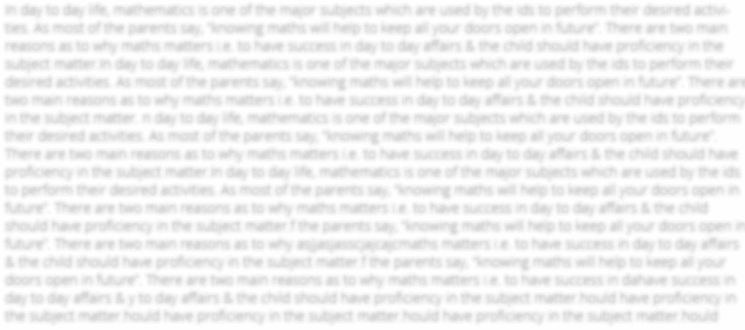INTRODUCTION
Finance plays an important role in the growth and development of an organisation. Without it, no organisation can survive in this competitive world. In the present report, sources of finance are discussed in detail, and some of them are recommended to the reader. Apart from these components of cost are also described in detail. In the middle part of the report trial balance is prepared, and adjustments are made. After that ratio analysis is done and recommendations are given in respect to performance improvement. At the end of the report, using break-even analysis, proposals are evaluated and recommended to the firm.
TASK 1
1.1 Sources of finance
Case of Mr. Stephen
Two sources of finance for Mr. Stephen are as follows.
Bank loan- Mr. Stephen can take a bank loan from a specific bank. If he does not get the entire amount from a single bank, then he can take loans from multiple banks. These loans are available at fixed or floating interest rates. There are some benefits and limitations of taking a bank loan. If the floating interest rate increases, then the finance cost of the firm will also increase. The same risk is not available in the case of a fixed interest rate loan. Hence, a loan with a fixed interest rate is recommended to Mr. Stephen.
Venture capital- Under this source of finance, there is a firm that gives capital to an individual for operating a new business. In return, that firm gets a stake in a newly formed company (Ratha, 2005). It also gets an amount share of the company's profitability. This source of finance is an alternative to a loan, and in this, it is not necessary to pay interest to the capital lender on time. A major limitation of this source of finance is that the control of the real owner of the company gets diluted. Hence, they cannot make entire business decisions individually. Due to the availability of flexibility at the time of returning of amount, this source of finance is recommended to Mr. Stephen.
(a)Sources of finance for large-sized businesses
Equity- Large large-sized corporation is eligible to bring an IPO on the basis of passing certain parameters that can raise capital through this source of finance. If capital is raised through this source of finance, then the business will get lots of benefits. In the case of equity, it is not necessary to pay a dividend every year (Zhengfei and Lansink, 2006). Hence, finance cost can be controlled. This is a major benefit that business gets from this source of finance. However, the issue of equity leads to dilution of the control of existing shareholders. This is a major limitation of this source of finance. But in the case of this source of finance majority of holdings remain with the company owners. Thus, it is not a matter of concern.
Private equity-It is a variant of equity, but in this like venture capital firm there is a company that gives capital to the company. In return, they get a share of the profit. Due to shareholding, they have the right to give guidance to the firm. With the help of guidance, a firm can operate business in an effective manner. It is also its main advantage. The main limitation of using this source of finance is that the control of existing shareholders gets diluted in the company (Tarca, Morris and Moy, 2013).
Short-term loan- Firms can take a short-term loan in order to get finance according to their working capital requirements. Thus, business operations are not impeded due to a lack of finance. This is also its major advantage. The limitation of these sources is that interest needs to be paid on time.
1.2 Contribution of different things to business profitability
There are various things that affect business profitability.
Sales- By generating sales firm can enhance its level of profitability. Hence, the firm must adopt measures that elevate its sales for the upcoming year.
Sponsorship- Under this, a company takes sponsorship of any event. In return, it gets the right to advertise its products or brand name on a large scale. As a result, a prestigious image of the company's product is created among people. Ultimately, this leads to an increase in sales of the company's product.
Grants- In many nations government gives a grant to business organisations. Firms use these grants for their business expansion. This gives a boost to the company's cash flows. Hence, the profitability of the company also increased.
TASK 2
2.1 Elements of cost, gross profit and sales price
There are two types of costs. These costs are discussed below:
Direct cost- It refers to the cost that is incurred in the production process. These costs may be raw material purchase costs, etc.
- Direct material cost- It refers to the material that is used in the production process. Raw material purchase is the best example of a direct cost.
- Direct labor cost- It refers to the employees who are involved in the production process. Employee cost related to these labors is counted in direct labor cost (Williamson, 2010).
- Direct expense- It refers to the expenses that are related to the production of goods and services. Carriage expenses are counted as a direct expense.
Indirect cost- Indirect cost is those costs that are not related to the production process. Administrative cost is best example of indirect expenses.
- Indirect material cost- It refers to those materials that are used in the normal operations of the business. Expenses incurred on sales and office operations come under indirect expenses.
- Indirect labor cost- It indicates the cost related to employees who are not involved in the production process (Kothari, Li, and Short, 2009). Employee cost related to the manager is the best example of indirect labor cost.
- Indirect expense- It is a cost that is not related to the production process. Expenses related to the purchase of cleaning equipment are the best example of indirect expenses.
Fixed cost- It refers to the cost that remains fixed and does not change. Purchase of machinery is the best example of a fixed cost.
Variable cost- It refers to the cost that very with a change in the production process. Raw material cost is a well-known example of indirect cost.
Semi variable cost- It is a cost whose some part remains fixed and some remains variable.
Gross profit percentage- It is calculated by using gross profit and net sales (Thompson, Jones-Evan and Kwong, 2009). By dividing gross profit from net sales and multiplying it by hundred gross profit percentage is calculated.
Sales price- There are two elements of sales price, including cost and margin percentage. By adding both elements, the sales price is calculated.
2.2 Methods to control stock and cash
In a hotel, there are many kinds of rooms with different capacities and prices. In order to control the room's prediction must be made in this regard. After this way in which rooms are allocated to the guests must be reviewed. Suppose there is a room for four people, and two people want that room. It is basic logic that the cost of four people cannot be charged to two people (Osterwalder and Pigneur, 2010). If the firm allots room to those two people, then it will face a loss. Hence, at the place of giving room to the people firm can wait and allot room to the other four people in the group. The conclusion is that, on the basis of prediction and trends of room filling, rooms must be allocated to the prospective guests.
Cash can be controlled by using a cash management strategy. By using this strategy, cash can be received quickly from the debtors, and late payments can be made to the creditors. If more time is taken by the debtor in making payment, then by making a late payment to the lag time can be offset using this tactic.
TASK 3
3.1 Drafting a trial balance
Table 1: Trial balance as on 31 December 2014
|
Particulars |
Debit |
Credit |
|
Cash |
11,700 |
|
|
Debtors |
12,000 |
|
|
Rates |
1,880 |
|
|
Bank Loan interest |
1,400 |
|
|
Other expenses |
11,020 |
|
|
Vehicles |
2,020 |
|
|
Trade Creditor |
11,200 |
|
|
Sundry creditors |
1,620 |
|
|
Purchases |
12,400 |
|
|
Bank Loan |
12,000 |
|
|
Capital |
13,000 |
|
|
Sales |
14,600 |
|
|
Balance |
52,420 |
52420 |
Procedure for preparing a trial balance
- Preparing a journal account- In this step, a journal account is prepared in which a separate entry is made to each and every transaction. These transactions are further grouped on the basis of similarities in a separate account.
- Source of ledger/Preparing a ledger account- In this step, a ledger account is prepared in which person-wise and item-wise accounts are created (Gali, Gertler, and Lopez-Salido, 2007). In the ledger account balance of debit and credit sides of the account is matched in order to ensure that no mistake is made in the accounts entry.
- Preparation of trial balance- On the basis of the ledger account, all details related to transactions are necessary to be entered into the trial balance.
3.2 Adjustments and notes
Table 2: Adjusted Trial Balance
|
Particulars |
L/F |
Debit Amount |
Credit Amount |
|
(in £) |
(in £) |
||
|
Opening Stock |
- |
86,000 |
|
|
Purchases |
- |
1336000 |
|
|
Salaries |
- |
110000 |
|
|
Wages |
- |
61,000 |
|
|
Carriage Inwards |
- |
26,900 |
|
|
Trading Charges |
- |
64,000 |
|
|
Carriage Outwards |
- |
52,500 |
|
|
Rent received |
- |
178300 |
|
|
Cash |
- |
62,500 |
|
|
Capital |
- |
344700 |
|
|
Bank (Overdraft) |
- |
37,980 |
|
|
Commission |
- |
42,780 |
|
|
Creditors |
- |
468000 |
|
|
Sales |
- |
1548700 |
|
|
Debtors |
- |
256000 |
|
|
Machinery |
- |
480000 |
|
|
Total |
2,577,680 |
2577680 |
Adjustments explanation
Purchase of machinery- Purchase of a machine on credit means that the machine was purchased from someone without making payment, and that transaction was not recorded. Machinery of 200000 is purchased on credit, and its entry was not made. In order to make changes in the trial balance, adjustments are made. In this regard purchase value in the trial balance is increased by 200000. In the same way, creditors are also increased by the same value. Hence, changes come in both the purchase and the creditors headings in the trial balance.
Wage adjustment- The Wage amount of 43,000 was wrongly added to the salary. In order to make corrections, changes are made in the trial balance. In this regard, 43,000 is deducted from the salary and the same is added to wages. Hence, entry affects both wages and salaries.
3.3 Purpose and process of budgetary control
The main purpose of preparing a budget is to perform a control function. In the budget, figures are determined for the sales and purchases, as well as other things. The manager makes an attempt to maintain expenses within a determined limit by preparing a budget. Second main purpose of preparing budget is to motivate managers to make extra effort to control expenses. Budget reflects the expectation of top level management from the managers. Hence, budget acts as a motivating factor for managers (Olson, Slater and Hult,, 2005). Process of budgetary control is as follows.
- Preparing standard- In this step standards are determined which will be followed for controlling the cost of company. These standards are determined on the basis of past data and management expectation about the future scenario. Hence, accurate estimation about future is required for preparing standards for the budget.
- Measuring a performance- In this step manager measures the performance of company in terms of sales and expenses. After measuring results report is prepared and communicated to the top level management for further action.
- Preparing of corrective action- After communicating results to top level management, middle-level managers are focused on taking corrective actions in order to ensure that same mistakes will not be committed in future (Graf, 2005).
- Modification- If top managers recommend some changes then that modifications are added into the corrective actions. After that, these actions are implemented in order to make sure that same mistakes will no again committed by the employees.
3.4 Analysis of variance and reasons behind change variance in values
Table 3: Direct material price variance
|
Actual price |
9.5 |
|
Budgeted price |
10 |
|
Actual produce |
1000 |
|
Direct material price variance |
-500 |
Interpretation
Material price variance of the firm is favorable and this reflects that firm purchases raw material at a lower cost than stated in a budget (Baden-Fuller and Morgan, 2010). This happens because firm purchases raw material in a bulk. While purchasing in a bulk company gets a huge amount of discount. As a result, price of raw material is less than its actual price. Strong upward in currency movement may be another reason behind purchasing of raw material at least price. Thus, due to low price firm direct material price variance is positive.
Table 4: Direct material total variance
|
Actual price |
9.5 |
|
Budgeted price |
10 |
|
Actual production |
1000 |
|
Budgeted production |
1200 |
|
Direct material total variance |
-2500 |
Interpretation
This variance indicates the total variance in the direct material. Due to less raw material price and less production of goods, budgeted lots of amount are saved. Hence, lot of amount is saved from the firm side. Fewer units may be produced due to lack of demand. Substantial availability of unsold stock may be another reason behind the production of less unit than budgeted amount.
Table 5: Direct material usage variance
|
Actual quantity used |
4850 |
|
Standard quantity |
5000 |
|
Standard cost per KG |
10 |
|
Direct material usage variance |
1500 |
Interpretation
This variance indicates that firm use more raw material than budgeted cost or not (Reijers and Mansar, 2005). In the present case variance is favorable because less quantity of raw material is used for the production. Hence, on this front company gives good performance.
Table 6: Labor efficiency variance
|
Actual output |
1000 |
|
Actual hours |
4200 |
|
Standard cost of actual hours |
21000 |
|
Standard hours |
4000 |
|
Standard cost |
20000 |
|
Labor efficiency variance |
1000 |
Interpretation
This variance indicates that firm take more work from its workforce than budgeted hours or not. Variance is positive and within budgeted. This reflects that labor is efficiently utilized by




















